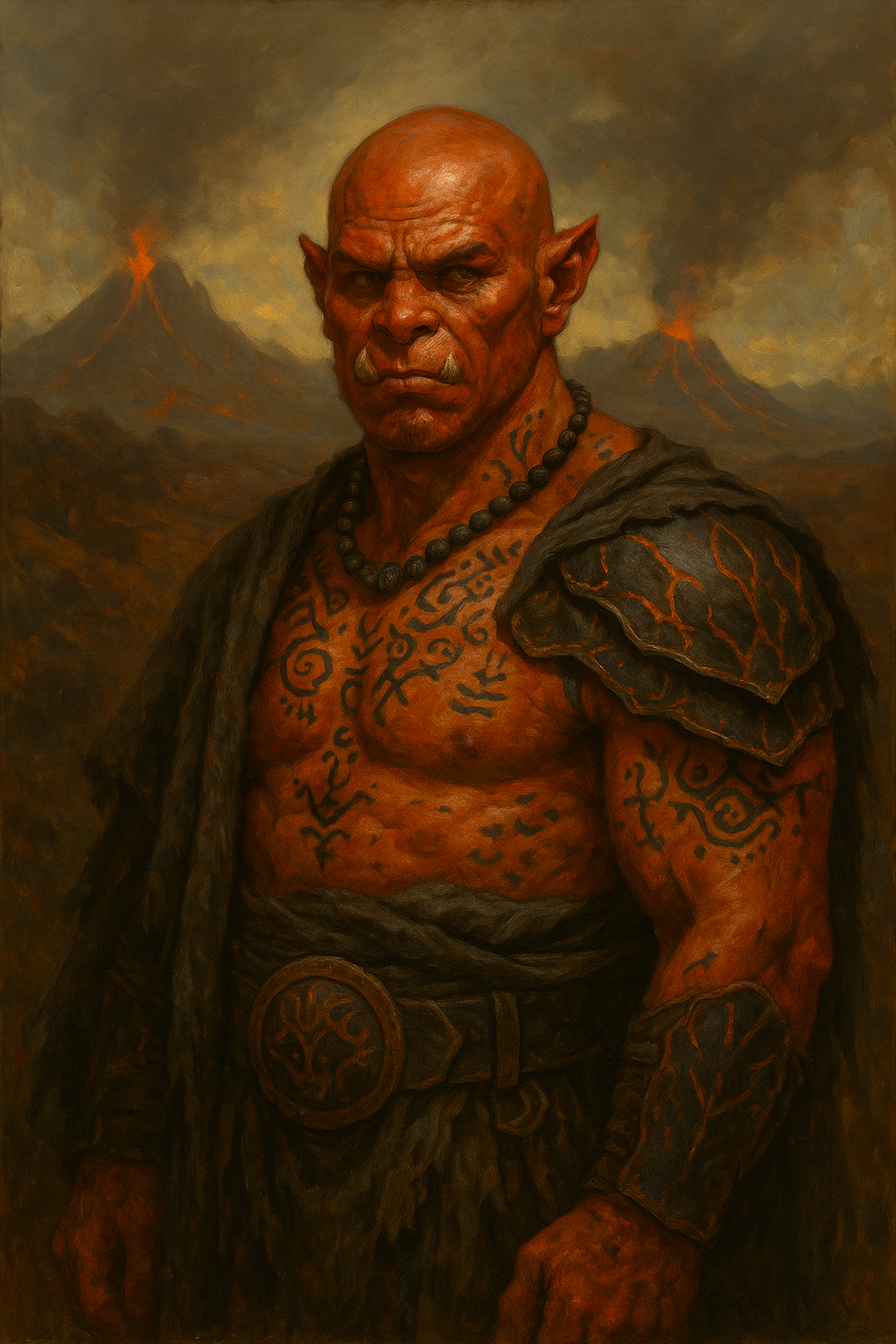Ashborn Orc
The Ashborn trace their lineage to orcish clans who once lived on the slopes of Mount Varkuun, a now-dead volcano sacred to the god Thalor. When the mountain erupted—whether by natural forces or divine wrath—their entire homeland was consumed. Those who survived did so through brutal adaptation, forging a new life in the scorched wastelands.
Culture
Major language groups and dialects
The orcs of this region speak a primary dialect known as Rukhaan, a harsh yet rhythmic offshoot of Old Thrukar. It developed as these clans split off from the traditional Thrukka strongholds during a period of forced migration and volcanic upheaval. Rukhaan retains the guttural strength of its parent language but has evolved to include a number of smoother, more flowing phonetic patterns, reflecting the orcs’ adaptation to trade and interaction with other mountain and lowland peoples.
Over time, two prominent dialect branches have emerged:
Rukhaan-Vol, spoken by those still living in the volcanic highlands, is terse and utilitarian, often using shortened phrases and clipped endings. It’s rich in metaphors about ash, flame, and survival.
Rukhaan-Sael, as some clans migrated into the lower valleys and engaged more frequently with neighboring cultures, a softened dialect known as Rukhaan-Sael emerged. It blends Thrukar structure with borrowed terms and intonations from nearby human and elven languages, allowing for easier trade and diplomacy. While still recognizably orcish, Rukhaan-Sael is less harsh in tone and quicker to adopt foreign loanwords.
Despite differences, all forms of Rukhaan remain mutually intelligible, and most speakers move fluidly between dialects depending on context—battle, trade, or ceremony. Children are raised bilingual in formal Thrukar and local Rukhaan, ensuring cultural continuity while embracing regional identity
Culture and cultural heritage
The Ashborn are a divergent orc lineage shaped by centuries of volcanic habitation, ritualized survival, and exile from the larger Thrukka diaspora. Unlike the war-driven tribes of the northern plains or the shamanic hill clans, the Ashborn trace their identity to a cataclysmic event—a mass exodus after the Great Sundering, when a molten rift tore through their homeland and sundered the unity of the old tribes.
Rooted in fire and ash, Ashborn culture venerates endurance, rebirth, and craft. They see the volcano not only as a force of destruction but also a crucible of strength. Their ancestral myths speak of Kadrum the Bound Flame, an ancient orc who tamed the fire spirits and led the tribe into the mountain’s embrace, forging a pact with the land itself.
Their artistry is unmatched among the orcs. They etch molten metal into volcanic glass to craft ceremonial armor and adornments. Oral histories are burned into clay tablets, fused by flame, and kept in community hearth-temples—sacred places where stories are sung, not spoken, as a mark of reverence for the breath that fire consumes.
Though distant from traditional Thrukka values of conquest, the Ashborn have preserved orcish tenets of communal strength and ancestral loyalty. However, where other orcish societies embrace brute honor, Ashborn society emphasizes patience, ritual, and the shaping of one’s soul through toil. Outsiders often mistake them for reclusive mystics or smith-priests, but they are pragmatic, fiercely bonded, and wary of returning to the chaos that drove them into the mountains.





Comments